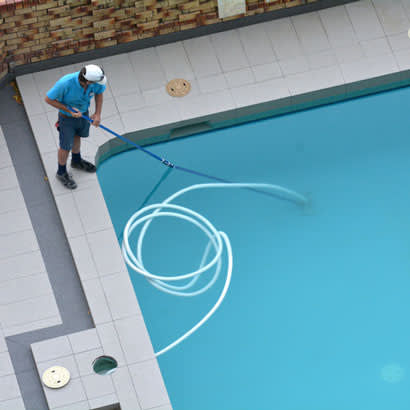
News of the chlorine shortage has been all over mainstream media in the last week (see CNBC), sending homeowners scurrying to purchase needed supplies. There are claims that this has sparked panic purchasing similar to the toilet paper hoarding in 2020, although I do not think that is occurring.
Instead, I believe homeowners are purchasing early because of the shortage, but do not seem to be buying more than a normal season’s supply. This is a good thing as it will aid in prolonging the inevitable. Unfortunately, we will likely reach a point where trichloro-s-Triazinetrione is impossible to find.
In 2020, we put more water in U.S. backyards than ever before, bringing the number of inground residential swimming pools up to 5.2 million and public pools to 255,000 (Pkdata 2021), with an overall growth of 24 percent (PHTA). This considerable increase in demand, unfortunately, coincided with Hurricane Laura, who rolled ashore in mid-August, causing the country’s largest-producing manufacturer’s (BioLab) Westlake facility to catch fire and burn to the ground. An estimated 800 tons of trichloro-s-Triazinetrione went up in smoke (Reuters).
Luckily, this isocyanurate annihilation occurred only weeks before Labor Day, when half of the country buttons up and tarps their pools for the year. The timing of this weather event kept the chlorine shortage widely unknown and out of the public eye. Still, swimming pool professionals maintaining backyard water throughout the southern states felt an immediate impact with forced bucket limit restrictions from wholesale distribution and over 40 percent increases in cost.
What does this mean for the pool at your park?
Although trichlor is not commonly used in park pools, I’m afraid we are still going to be tossed about in the ripple effect. Liquid chlorine bleach, calcium hypochlorite, and salt are likely to recognize an immediate strain due to a massive increase in demand caused by tablet-using homeowners shifting to alternative means of chlorination.
While it is unlikely that non-trichlor products will become exhausted, I would expect hiccups in logistics as these manufacturers attempt to meet demand. Ordering in slightly larger quantities than usual for your facility at this time is probably wise, but panic purchasing will only make you part of the problem.
Be sensible in what you order. Do not contribute to the growing pains of unprecedented consumption. Both sodium hypochlorite and calcium hypochlorite have experienced slight increases in cost over the last several weeks. These jumps in worth are unrelated to the tablet shortage, but are price increases nonetheless.
Some things to assist in making purchasing decisions.
Trichlor tablets have an indefinite shelf life and will not lose Available Chlorine Content (ACC) over time. Calcium hypochlorite has a three-year shelf life, and at that point, it will begin to lose ACC, but at a prolonged rate. Sodium hypochlorite has a two-week shelf life dropping from 12 percent ACC to 8 percent, but never lower than 8 percent. Regular unscented household bleach has an ACC of 6 percent (1 gallon will give 6 ppm of DPD-FC (Free Chlorine) in 10K gallons) and can be used in a pinch. Let’s hope it never comes to this.
Do not use scented or splashless bleach in a pool. Keep in mind hazmat limits and fire codes when bringing in large quantities. We don’t want planning ahead to turn into violating the law.
More bad news?
I’m afraid there is more. The United States is also suffering from a pool equipment shortage, which hasn’t been covered much in mainstream news.
The winter storms that impacted Texas in February of this year, caused massive amounts of freeze damage to pools in their wake. These storms left Texans with a lot of cracked pool equipment in need of repair.
With 4- to 6-week delays, it makes sense to order commonly used pool parts now. The same holds true if you have a planned equipment purchase or install for 2021.
In summary, the chlorine shortage may cause some headaches for aquatics professionals, but shouldn’t lead to major disruptions. Stock up on needed supplies without overbuying and your summers should be just fine.
Rudy Stankowitz is an author, columnist, coffee addict, 30-year veteran of the swimming pool industry, and consultant/educator to the aquatic industry. Originally from Long Island, he currently lives in Florida with his wife Joy, children, grandchildren, and two pups (Ghost & Tigger). His hobbies include travel, photography, and watching scary movies with the grandkids (Scooby-Doo with the little ones). You can follow Rudy at www.cpoclass.com.

